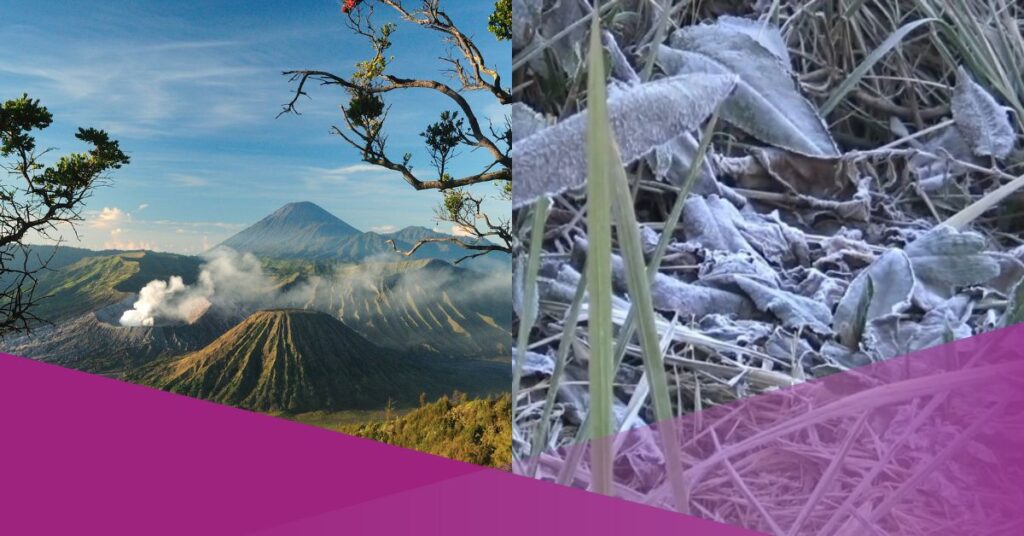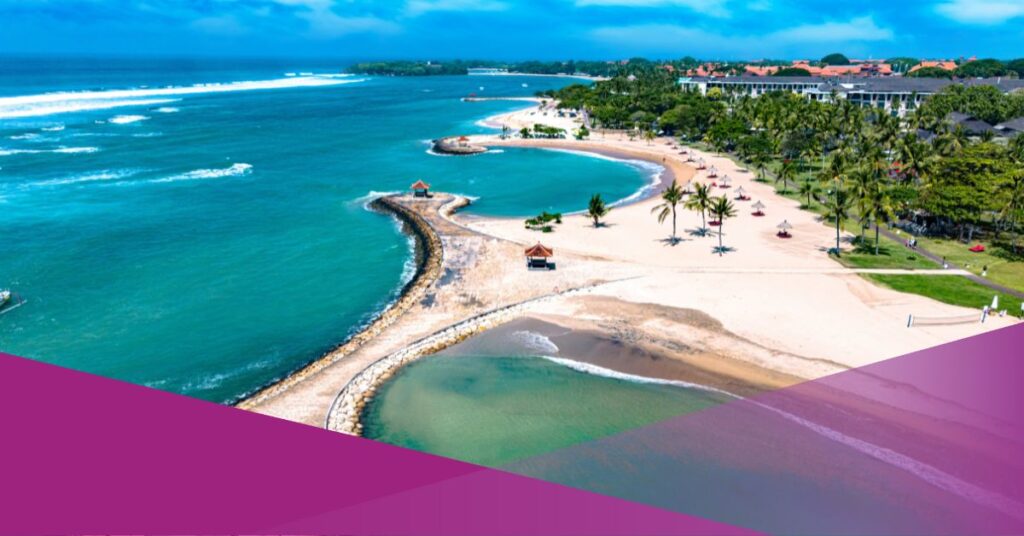The dry season once again brings the annual phenomenon of ice dew, locally referred to as upas, to Mount Bromo. Since the early hours of Wednesday, 9 July 2025, thin layers of ice have been observed forming on the sand and grasslands of the Tengger savanna in Cemoro Lawang Hamlet, Probolinggo Regency, East Java.
Triggered by a significant drop in night-time temperatures to around 5 degrees Celsius, the frozen dew creates a striking white covering over the landscape.
This seasonal occurrence attracts tourists and photographers eager to witness and document the rare natural event that resembles alpine frost. Many visitors have chosen to stay overnight in local homestays to catch the phenomenon before dawn, just after enjoying the iconic Bromo sunrise.
According to reports from Detiknews, “The tourists flocked to the location after enjoying the sunrise to capture this rare moment. Not a few who deliberately stay at homestays around Cemoro Lawang so as not to miss the best time when ice flowers begin to appear before dawn.”
The freezing dew is not an isolated incident; rather, it is a routine natural occurrence in the highlands of East Java during the dry season, particularly in July and August. The clear and cloudless skies at night allow ground heat to escape quickly into the atmosphere, resulting in rapid cooling that enables dew to freeze.
In Tenggerese, this condition is called bediding or mbedhidhing, a term describing the distinctly cold air felt during the dry season.
Other high-altitude areas such as Dieng and Argopuro frequently experience similar conditions during this time of year, indicating a broader regional pattern of temperature drops.
BMKG Clarifies Meteorological Cause Behind Cold Weather
The Meteorology, Climatology and Geophysics Agency (BMKG) has addressed public speculation regarding the recent cold temperatures experienced across several Indonesian regions, particularly Java, Bali, and parts of Nusa Tenggara. Many residents have reported noticeably colder air from night to early morning since early July.
The BMKG clarified that the phenomenon, commonly referred to as bediding in Java, is a normal climatological occurrence during Indonesia’s dry season. It is not linked to the Earth’s position during aphelion, when it is farthest from the Sun in early July.
In an official statement via its Instagram account @infobmkg on Wednesday, 9 July 2025, the BMKG stated:
“The cold weather felt by the people of Indonesia, especially in the southern equatorial regions such as Java, Bali and Nusa Tenggara, is actually a natural thing and occurs every dry season, which is around July to September.”
The agency outlined three primary meteorological causes for the temperature drop. Firstly, Indonesia is currently experiencing the dry season marked by the dominance of the east wind, known as the Australian Monsoon. These winds are typically dry and carry cooler air into Indonesia, particularly south of the equator.
Secondly, cloudless night skies facilitate more effective heat radiation from the Earth’s surface into the atmosphere, causing surface temperatures to fall rapidly in the early hours of the morning.
Thirdly, sporadic rainfall during the transition period contributes to the cooling. The rain brings cold air masses from higher altitudes and simultaneously inhibits daytime warming by blocking sunlight.
“Aphelion, which is the Earth’s annual position at its farthest point from the Sun around the beginning of July, does not have a significant influence on the decrease in air temperature on the Earth’s surface, especially in tropical regions such as Indonesia,” write BMKG in their press release to Indonesian media.
As the dry season continues, residents and tourists are advised to prepare for cold mornings, especially in highland areas. The bediding effect will likely persist into September, following typical seasonal patterns.










































